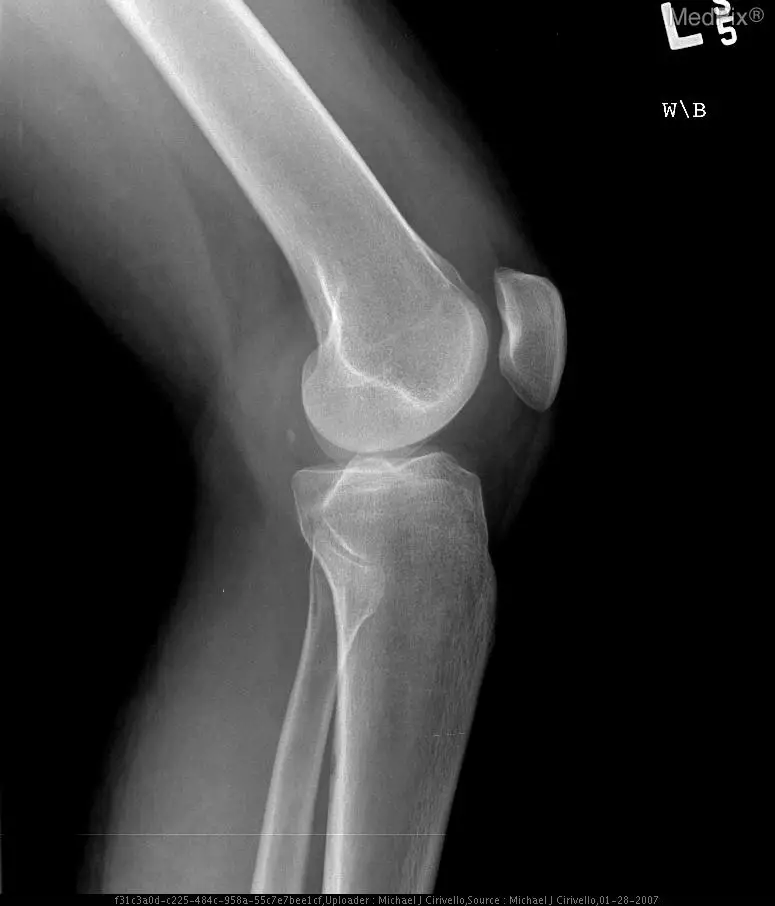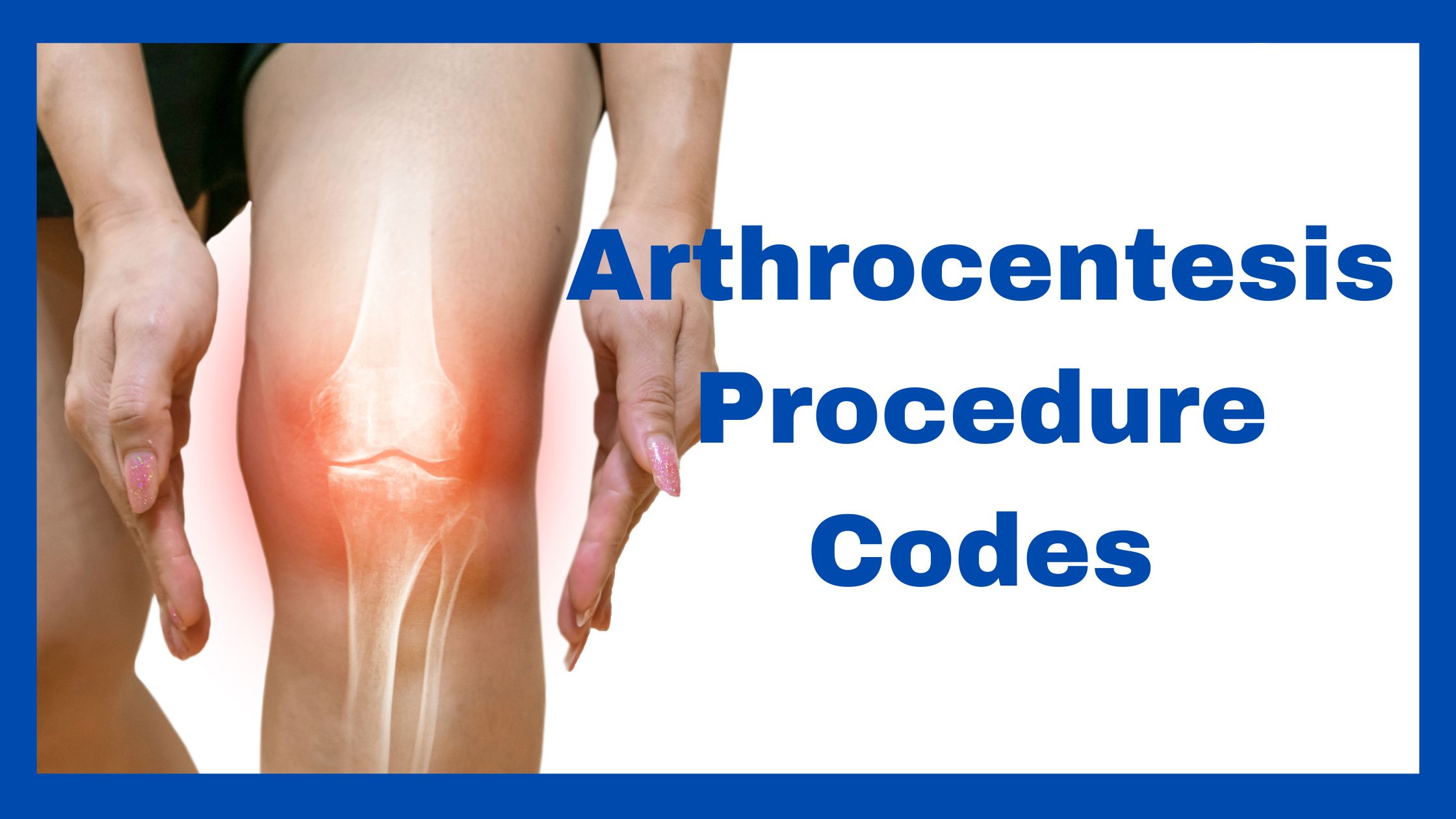CPT (Current Procedural Terminology) codes are used in the United States to report medical procedures and services. Arthrocentesis CPT Codes are 20600, 20610, and 20605 and procedure Arthrocentesis involves fluid aspiration (withdrawal) from a joint space using a needle. Here are the CPT codes associated with arthrocentesis procedures:
Arthrocentesis CPT Codes :
CPT Code 20600:
Description: Arthrocentesis, aspiration and/or injection; small joint or bursa (e.g., fingers, toes).
Explanation: This CPT code 2060 is used for arthrocentesis procedures involving small joints or bursae, such as those in the fingers or toes. It encompasses both the aspiration (withdrawal of fluid) and injection (introduction of medication or substances into the joint) aspects of the procedure.
CPT Code 20605:
Description: Arthrocentesis, aspiration and/or injection; intermediate joint or bursa (e.g., temporomandibular, acromioclavicular, wrist, elbow or ankle, olecranon bursa).
Explanation: This CPT code 20605 is applied when performing arthrocentesis on intermediate-sized joints or bursae. Examples include the temporomandibular joint, acromioclavicular joint, wrist, elbow, ankle, or olecranon bursa. As with other arthrocentesis codes, it covers both aspiration and injection components of the procedure.
CPT Code 20610:
Description: Arthrocentesis, aspiration and/or injection; major joint or bursa (e.g., shoulder, hip, knee joint, subacromial bursa).
Explanation: CPT code 20610 is used for arthrocentesis procedures involving major joints or bursae. This includes larger joints like the shoulder, hip, knee joint, or the subacromial bursa. The code 20610 encompasses both the aspiration of fluid from the joint and the injection of substances into the joint if performed during the procedure.
CPT Code 20604:
Description: Arthrocentesis, aspiration, and/or injection; small joint or bursa (e.g., fingers, toes).
Explanation: CPT code 20604 is used when performing arthrocentesis, which involves withdrawing fluid from a small joint or bursa. It is commonly applied to joints or bursae in the fingers or toes. The procedure may include both aspiration (removal of fluid) and injection (introduction of medication or substances into the joint).
CPT Code 20606:
Description: Arthrocentesis, aspiration, and/or injection; intermediate joint or bursa (e.g., temporomandibular, acromioclavicular, wrist, elbow or ankle, olecranon bursa).
Explanation: CPT code 20606 is used for arthrocentesis procedures involving intermediate-sized joints or bursae. It covers areas such as the temporomandibular joint, acromioclavicular joint, wrist, elbow, ankle, or olecranon bursa. As with other arthrocentesis codes, it may involve both aspiration and injection.
CPT Code 20611:
Description: Arthrocentesis, aspiration and/or injection; major joint or bursa (e.g., shoulder, hip, knee joint, subacromial bursa).
Explanation: CPT code 20611 is used when performing arthrocentesis on major joints or bursae. This includes larger joints such as the shoulder, hip, knee joint, or the subacromial bursa. Similar to the other codes, it encompasses both the aspiration of fluid from the joint and the injection of substances into the joint if needed.

When coding for arthrocentesis, select the code that best describes the specific joint or bursa involved in the procedure. The codes differentiate between small, intermediate, and major joints. Additionally, the codes may cover aspiration (withdrawal of fluid) and injection (introduction of medication or other substances into the joint).
Always ensure that you use the most accurate and specific code based on the documentation of the procedure performed. Multiple codes may be reported if multiple joints or bursae are involved. It’s advisable to consult with a coding specialist or healthcare professional to ensure accurate coding based on the specific details of the arthrocentesis procedure.
What is Arthrocentesis?
Arthrocentesis is a medical procedure involving fluid aspiration (withdrawal) from a joint space using a needle. This procedure is commonly performed to diagnose and treat various joint-related conditions. Here’s an overview of arthrocentesis:
Purpose:
- Diagnostic Tool: Arthrocentesis is often used to obtain a sample of synovial fluid, the lubricating fluid found in joints. This fluid sample can be analyzed to help diagnose the cause of joint pain, swelling, or inflammation. Diagnostic arthrocentesis is particularly common in arthritis, infection, or crystal-related diseases (such as gout or pseudogout).
- Therapeutic Intervention: In addition to its diagnostic role, arthrocentesis can serve a therapeutic purpose. For example, it can relieve pain and swelling by removing excess synovial fluid from the joint. Medications, such as corticosteroids, may be injected into the joint during the procedure to provide anti-inflammatory effects.
Procedure:
- Patient Preparation: The patient is typically positioned in a way that provides easy access to the joint. The skin over the joint is cleaned and sterilized.
- Local Anesthesia: A local anesthetic may be administered to numb the skin and underlying tissues around the joint.
- Needle Insertion: A sterile needle is carefully inserted into the joint space. The physician guides the needle to ensure accurate placement within the joint.
- Fluid Aspiration: Using a syringe, the physician withdraws a sample of synovial fluid from the joint. The amount of fluid collected depends on the procedure’s specific diagnostic or therapeutic goals.
- Post-Procedure Care: After the procedure, the patient may be monitored for a short period. In cases of therapeutic arthrocentesis, the relief of symptoms may be immediate or gradual.
Common Joints Targeted:
- Small joints (e.g., fingers, toes)
- Intermediate joints (e.g., shoulder, elbow, knee)
- Major joints (e.g., hip, wrist)
Indications for Arthrocentesis:
- Diagnostic: To investigate the cause of joint symptoms.
- Therapeutic: To relieve pain and swelling or to administer medications directly into the joint.
Arthrocentesis is generally considered a safe and well-tolerated procedure, but as with any medical intervention, there are potential risks and complications. These should be discussed with the healthcare provider performing the procedure.
Image Credit: Google and National Library of Medicine
Related Articles:
Trigger Finger Injection CPT code
Pain in Knees ICD 10|ICD 10 Code For Knee Pain
CPT Code 99213 Description and Uses
The author and contributor of this blog "NSingh" is working in Medical Billing and Coding since 2010. He is MBA in marketing and Having vaste experience in different scopes of Medical Billing and Coding as AR-Follow-up, Payment Posting, Charge posting, Coding, etc.

